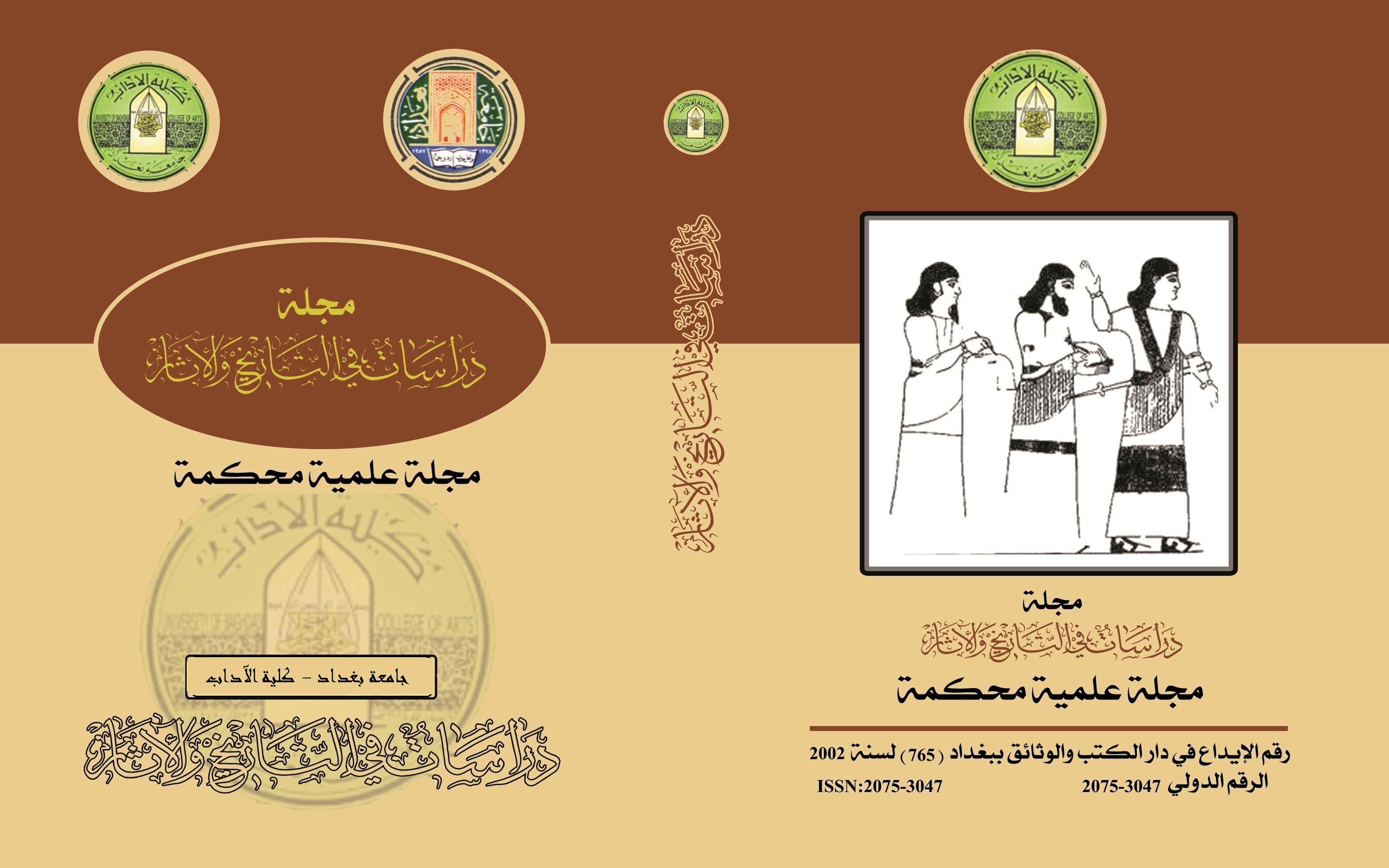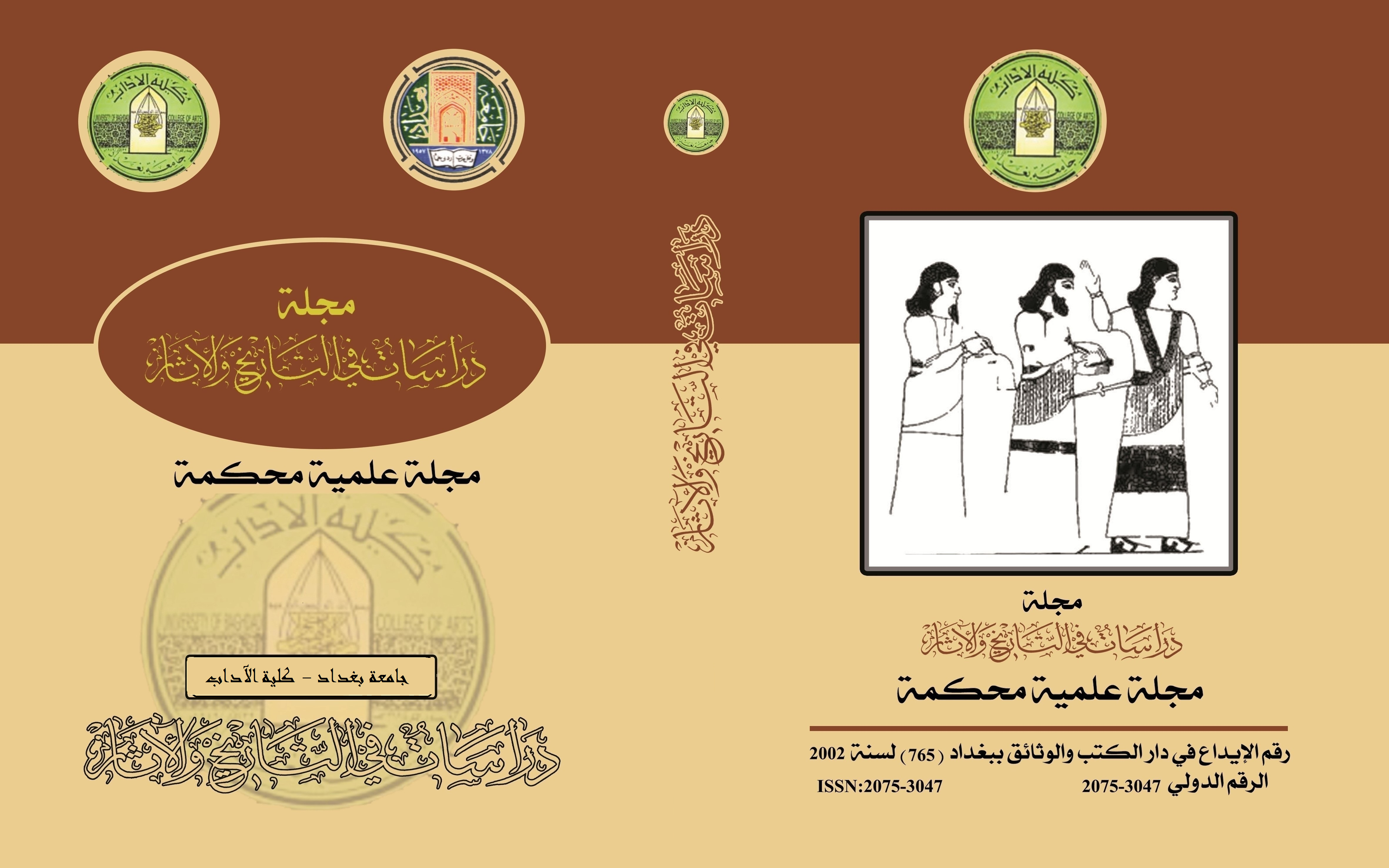العسل في الطقوس الدينية
الكلمات المفتاحية:
العسل، الطقوس الدينية، ترميم المعابد، طقوس التزييتالملخص
إن العوامل الطبيعية التي عاشها إنسان بلاد الرافدين من تقلبات الطقس وعدم الاستقرار في بدء حياته في منطقة محددة، خلقت لديه حالة من الخوف الذي ولد عنده حالة من التفكير العقلي لما يحيط به، الأمر الذي أدى إلى ظهور نوع من المعتقدات الدينية وما توصل اليه نتيجة تخوفه من الحوادث الطبيعية مجهولة المصدر اليه لذا أخذ بممارسة الطقوس الدينية اليومية من صلاة وادعية وتراتيل وتقديم النذور والقرابين واحتفالات دينية لاعتقاده بقدرته على كسب رضا هذه القوى من ممارسته للطقوس الدينية.
لقد دأب ملوك بلاد الرافدين على الأعمال الدينية التي أرادو عن طريقها إرضاء آلهتهم، فبنوا لها المعابد الفخمة وزودوها بالمؤن التي تحتاجها. وقد مارسوا مختلف أنواع الطقوس الدينية التي تنم عن ديانتهم ورغبتهم في المثول أمام آلهتهم بالشكل الذي يليق بهم بوصفهم ملوكاً، وقد أوردت لنا النصوص المسمارية العديد من هذه الممارسات الدينية. وذكر العسل في عدد من الاشارات النصية عن هذه الممارسات
المراجع
اولا: المصادر العربية
الراوي ، شيبان ثابت، الطقوس الدينية في بلاد الرافدين حتى نهاية العصر الحديث، أطروحة دكتوراه ، كلية الآداب، جامعة بغداد ، 2001.
ساكز، هاري، عظمة بابل ، ترجمة عامر سليمان ، الموصل ، ١٩٧٩.
محمد ،عثمان غانم ، الكتابات المسمارية على الآجر من الألف الأول قبل الميلاد (٩١١-٥٣٩) ق.م ، رسالة ماجستير (غير منشورة ) ، جامعة الموصل ، ٢٠٠٣.
الكودرو : هي أحجار غير منتظمة مخروطية الشكل قد تكون من الطين المفخور أو الحجر تقسم الى قسمين الاعلى تكتب عليها رموز الآلهة، اما القسم الثاني دونت عليها اسم الملك وصاحب قطعة الأرض وحدود الأرض ومساحتها استخدمت في تحديد الاراضي وفصلها عن قطع الأراضي الأخرى ومعرفتها. للمزيد ينظر: العبيدي ، خالد حيدر عثمان ، أحجار الحدود البابلية، رسالة ماجستير ، كلية الآداب ، جامعة الموصل ، 2001 ، ص23.
أثير ، أحمد حسين ، عمارة المعابد الآشورية وموجوداتها في ضوء النصوص الملكية ، مجلة بابل للعلوم الإنسانية ، مج: 20 ، عدد 2 ، 2012
طقوس التزييت : هي طقوس بمثابة التطهير من الذنوب والآثام وطرد الشر والكاهن يدعى( بشيش=pasisu )، وتعني بالأكدية ماسح بالزيت وعمله هو القيام بواجبات التطهير. للمزيد ينظر :علي، فاضل عبد الواحد ، " المعتقدات الدينية " ، موسوعة الموصل الحضارية ، مج: 1، 1991، ص 311.
شيت ، أزهار هاشم ، طقوس التزييت عند الآشوريين ، مجلة بابل للعلوم الإنسانية ، مج: 20، عدد (2) ، 2012 .
المعموري، فاطمة عباس، وفهد ، سعد سلمان ، شجرة الطرفاء في ضوء الكتابات المسمارية ، مجلة آثار الرافدين، المجلد السادس، ج2 ، 2021.
المقلو : طقوس الإحراق لطرد الأرواح الشريرة، فقد كانت النار وسيلة لطرد تأثيرات الشر، فتعاويذ المقلو كانت تهدف بشكل رئيس احباط محاولات كيد العرافيين والسحرة من البشر. لمعلومات أكثر ينظر :هاري ، ساكز ، عظمة بابل، تر: عامر سليمان ، ط2، 1979، ص346.
المصادر الانكليزي :
King ,L .,w., Babylonian boundary stones and memorial Tablets in the britisch museum, London (1912), NO . 36, iv:33, (=BBST).
Chicago Assyrian Dictionry (CAD , D,K/H/J/S) Chicago,1964
Boger , R Die Inschriften Asarha addons Kong von Assyrien Pbublished in (AFO,9) , Germany (1967), 85r. 48. (=Borger Esarh.); CAD , K,P.581:a
Ebeling, B, and others, “Die inschriften der Altassyrischen konige”, AOB, VOL. 1, Leipzig, 1926,12 NO . 7:26;CAD,M/1, P.77:a
OttO,S. Keilschri FHexte aus Assur verschie denen in halts, Toronto (1920), 33:23 (=KAR); CAD, N/,P.337:a
Scurlock, J,A, “MAGIGAL OF THE ANCIENT MESOPOTAMIAN FESTIVALS OF THE DEAD” Religions, in the grace-roman worlad , vol.129, brill, 1995, p.p 93-707;2A,45,44:38f CAD, A/1,P.201:a
Thompson, R.C., Assyrian Medical Texts Oxford(1023) , 90,1 ii (=AMT). CAD, ILJ,P.46:a
Heinrich, Z, Beitrage zur Kenntnis der babylonischon Religion, Leipzig, 1901, NO .26:ii (=BBR); CAD, D,P . 162 :b .
Thompson, R.C., Texts from Babylonian tablets, in the British museum, London , 1903 , 39:43f, (=CT,11); CAD ,E ,P.278:a
langdon, S., die neubabylon ischen konigschrift, Leipzig, (1912). 92, ii,32(=VAB,4); CAD , E,P.104,a
التنزيلات
منشور
إصدار
القسم
الرخصة

هذا العمل مرخص بموجب Creative Commons Attribution 4.0 International License.
:حقوق الطبع والنشر والترخيص
بالنسبة لجميع البحوث المنشورة في مجلة دراسات في التاريخ والآثار، يحتفظ الباحثون بحقوق النشر. يتم ترخيص البحوث بموجب ترخيص Creative Commons CC BY 4.0 المفتوح ، مما يعني أنه يجوز لأي شخص تنزيل البحث وقراءته مجانًا. بالإضافة إلى ذلك ، يجوز إعادة استخدام البحث واقتباسه شريطة أن يتم الاستشهاد المصدر المنشور الأصلي. تتيح هذه الشروط الاستخدام الأقصى لعمل الباحث وعرضه.
:إعادة إنتاج البحوث المنشورة من الناشرين الآخرين
من الضروري للغاية أن يحصل الباحثون على إذن لإعادة إنتاج أي بحث منشورة (أشكال أو مخططات أو جداول أو أي مقتطفات من نص) لا يدخل في نطاق الملكية العامة أو لا يملكون حقوق نشرها. يجب أن يطلب الباحثون إذنًا من مؤلف حقوق النشر (عادة ما يكون الناشر).
يطلب الإذن في الحالات التالية:
بحوثك الخاصة المنشورة من قِبل ناشرين آخرين ولم تحتفظ بحقوق النشر الخاصة بها.
مقتطفات كبيرة من بحوث أي شخص أو سلسلة من البحوث المنشورة.
استخدم الجداول والرسوم البيانية والمخططات والمخططات والأعمال الفنية إذا لم يتم التعديل عليها.
الصور الفوتوغرافية التي لا تملك حقوق لنشرها.
لا يطلب الإذن في الحالات التالية:
إعادة بناء الجدول الخاص بك مع البيانات المنشورة بالفعل في مكان آخر. يرجى ملاحظة أنه في هذه الحالة يجب عليك ذكر مصدر البيانات في شكل "بيانات من ..." أو "مقتبس من ...".
تعتبر عروض الأسعار القصيرة معقولة الاستخدام العادل ، وبالتالي لا تتطلب إذنًا.
الرسوم البيانية ، الرسوم البيانية ، المخططات ، الأعمال الفنية التي أعاد الباحث رسمها بالكامل والتي تم تغييرها بشكل ملحوظ إلى درجة لا تتطلب الاعتراف.
الحصول على إذن
لتجنب التأخير غير الضروري في عملية النشر ، يجب أن تبدأ في الحصول على أذونات في أقرب وقت ممكن. لا يمكن لمجلة الآداب نشر بحث مقتبس من منشورات أخرى دون إذن.
قد يمنحك مالك حقوق الطبع والنشر تعليمات بشأن شكل الإقرار الواجب اتباعه لتوثيق عمله ؛ بخلاف ذلك ، اتبع النمط: "مستنسخ بإذن من [المؤلف] ، [كتاب / المجلة] ؛ نشره [الناشر] ، [السنة]." في نهاية شرح الجدول ، الشكل أو المخطط.



















